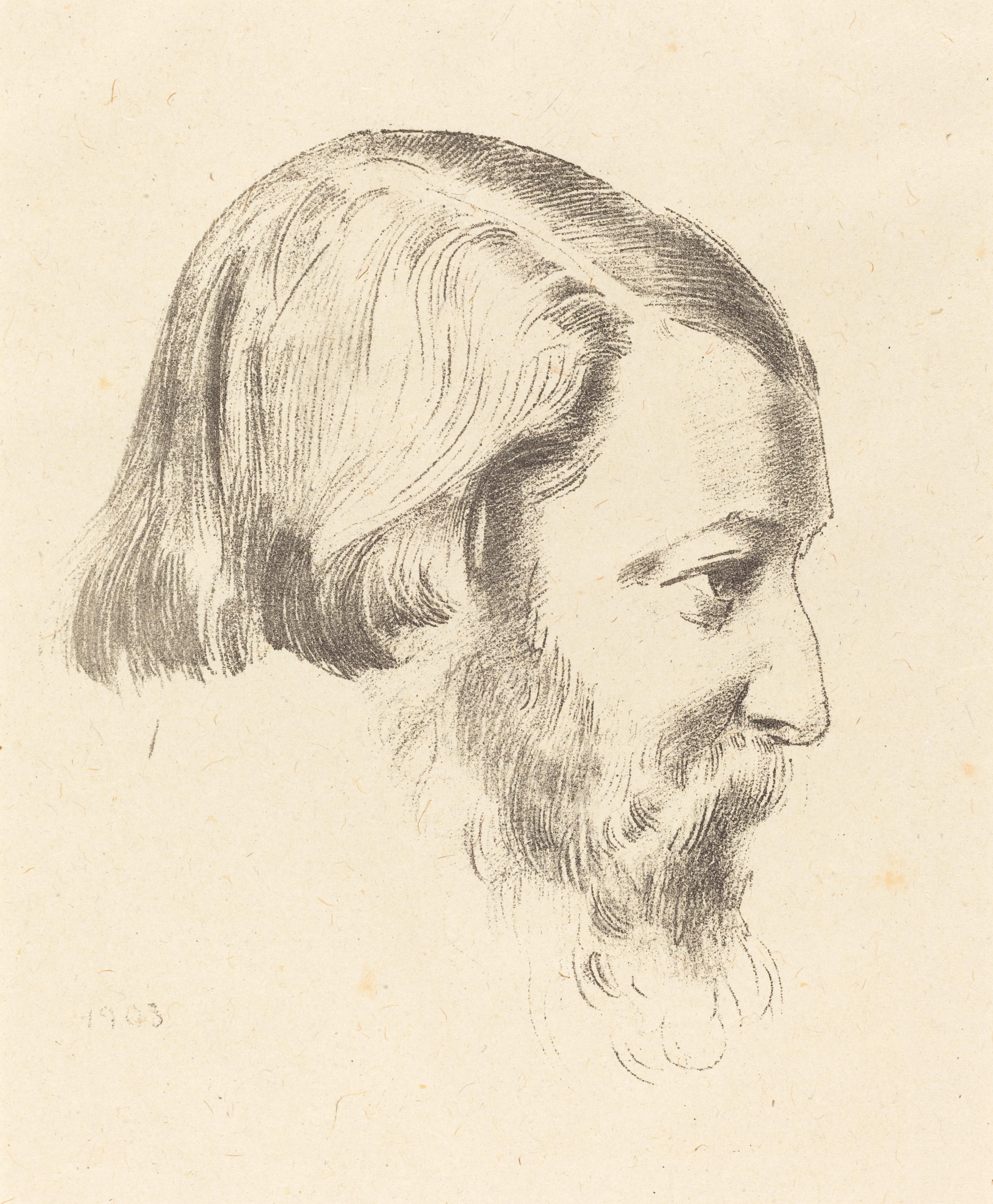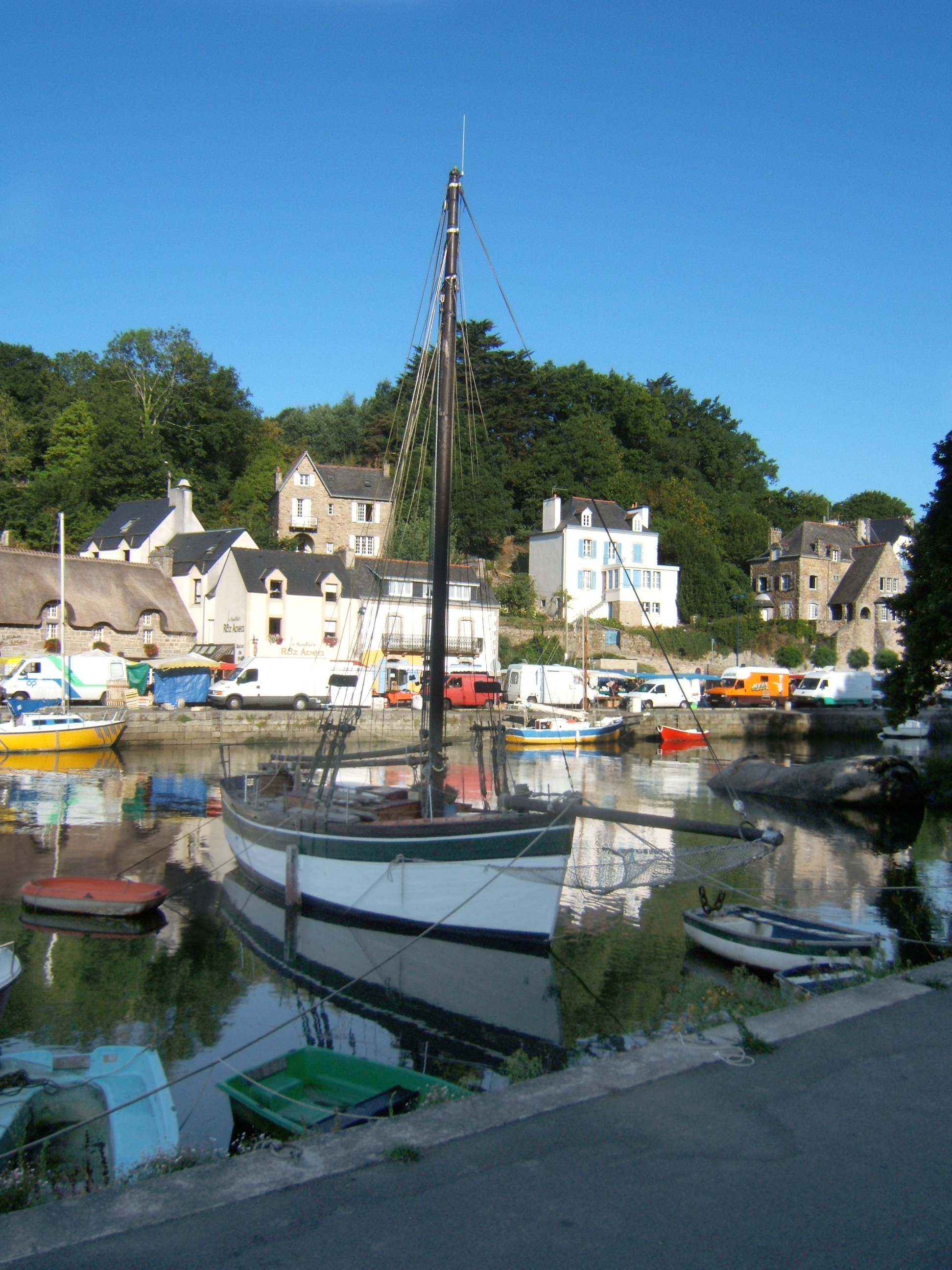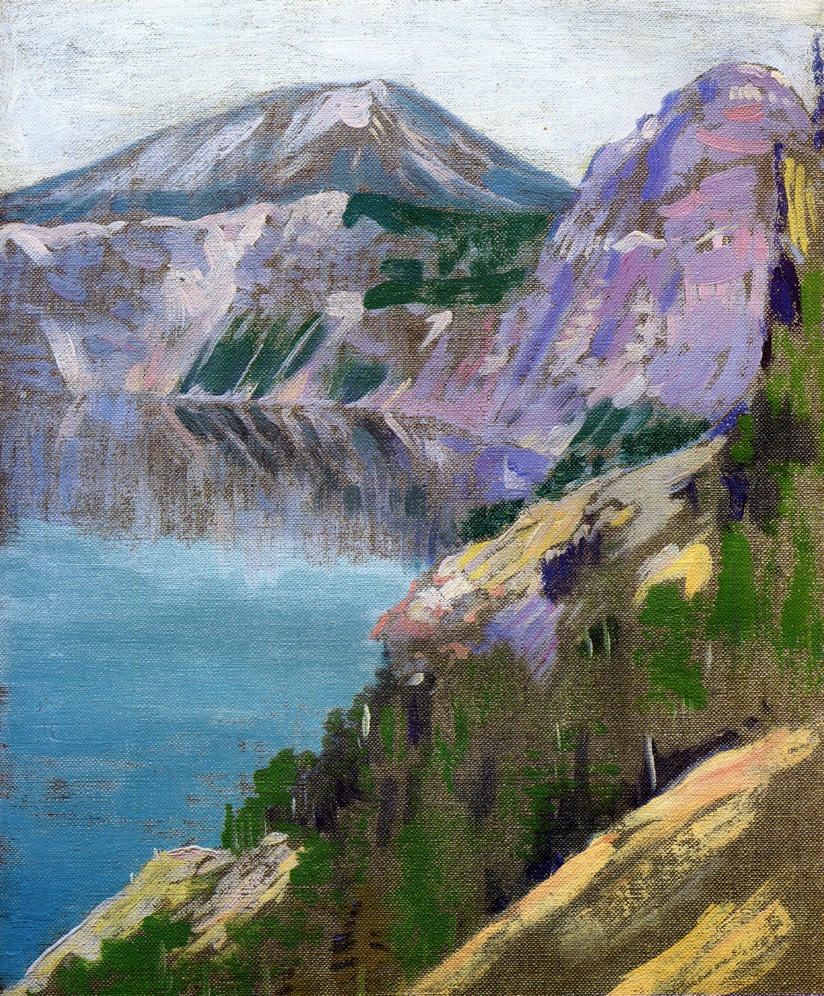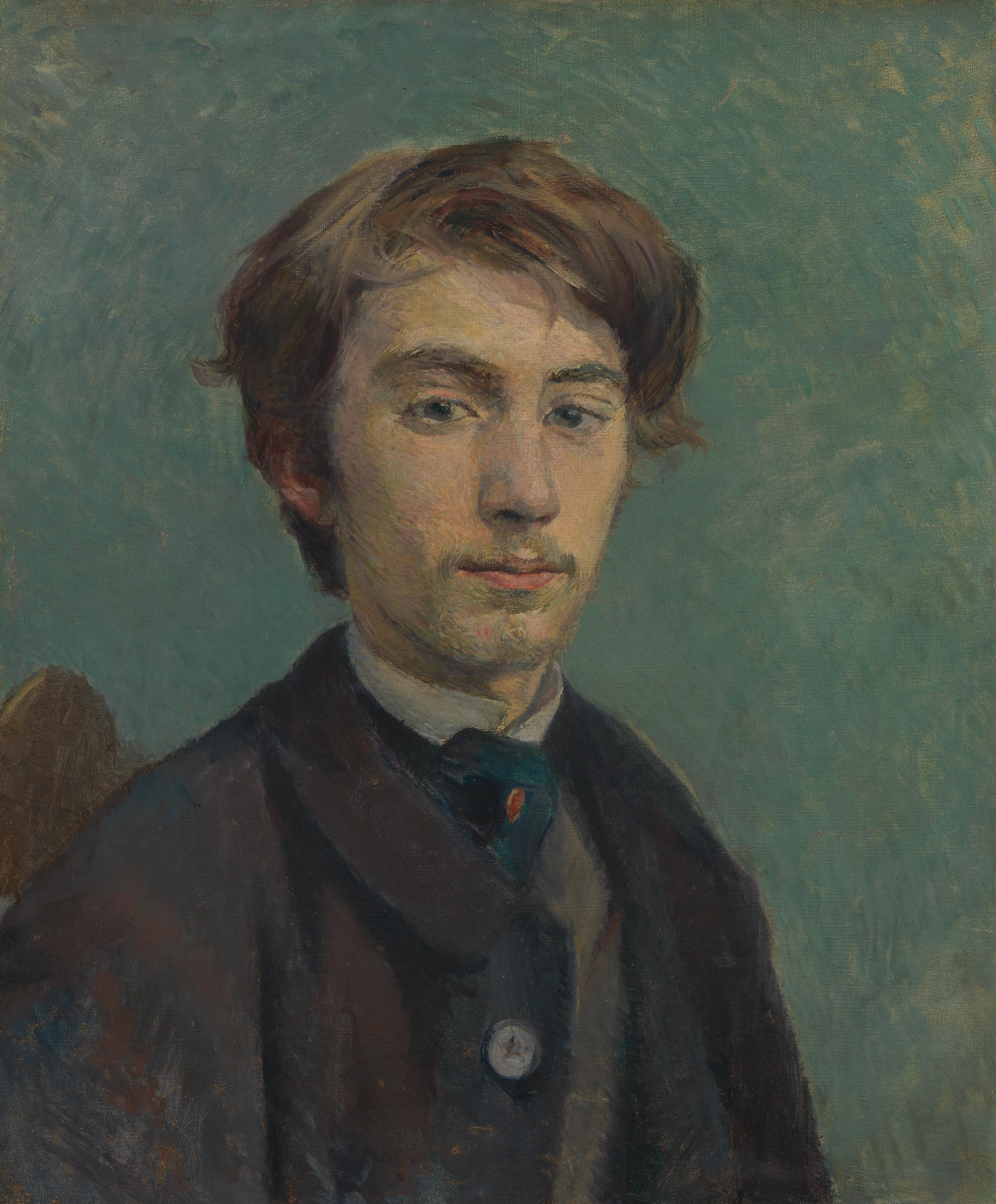|
Gloanec Pension
The Pension Gloanec was an inn in Pont-Aven, Brittany, France, that was a base for artists of the Pont-Aven School in the last half of the 19th century. It was known for economical but excellent quality food, where the diners served themselves from shared dishes set out on a long table in the dining room. There were few rooms, so most of the artists boarded elsewhere in the town. Its most famous resident was Paul Gauguin who stayed several times between 1886 and 1894. Today the building houses a bookstore, gallery and exhibition space. Artists discover the village Pont-Aven was "discovered" in 1864 by the American painter Henry Bacon (1839–1912). Two American art students, Earl Shinn (1838–1886) and Howard Roberts (1843–1900), arrived in Paris in the spring on 1866 and applied for admission to the École des Beaux-Arts. Their teacher in Philadelphia, Robert Wylie (1839–1877), had encouraged them to visit Pont-Aven in the summer. Word spread, and about twelve Ameri ... [...More Info...] [...Related Items...] OR: [Wikipedia] [Google] [Baidu] |
Pont-Aven School
Pont-Aven School (french: École de Pont-Aven, br, Skol Pont Aven) encompasses works of art influenced by the Breton town of Pont-Aven and its surroundings. Originally the term applied to works created in the artists' colony at Pont-Aven, which started to emerge in the 1850s and lasted until the beginning of the 20th century. Many of the artists were inspired by the works of Paul Gauguin, who spent extended periods in the area in the late 1880s and early 1890s. Their work is frequently characterised by the bold use of pure colour and their Symbolist choice of subject matter. Background Pont-Aven is a commune of the Finistère ''département'', in Brittany, France, some distance inland from where the river Aven meets the Atlantic Ocean. From the 1850s painters began to frequent the village of Pont-Aven, wanting to spend their summers away from the city, on a low budget in a picturesque place not yet spoilt by tourism. Gauguin first worked in Pont-Aven in 1886. When he returned in ... [...More Info...] [...Related Items...] OR: [Wikipedia] [Google] [Baidu] |
Herman Van Den Anker
Hermanus Franciscus Carolus "Herman" van den Anker (July 14, 1832 in Rotterdam – July 9, 1883 in Paris) was a Dutch artist who painted in Pont-Aven, Brittany. In 1854 he moved from his home town to Paris, and in 1868 moved to Pont-Aven, where he remained the rest of his life. He painted figures in national Breton dress. Together with Fernand Quignon, he painted the board which hung in the village above the entrance to the Pension Gloanec, designed to encourage artists to stay there. at the RKD
The Netherlands Institute for Art History or RKD (Dutch: RKD-Nederlands Instituut voor Kunstgeschiedenis), previously Rijksbureau voor Kunsthistorische Documentatie (RKD), is located in The Hague and is home to the largest art ...
[...More Info...] [...Related Items...] OR: [Wikipedia] [Google] [Baidu] |
Roderic O'Conor
Roderic O'Conor (17 October 1860 – 18 March 1940) was an Irish painter who spent much of his later career in Paris and as part of the Pont-Aven movement. O'Conor's work demonstrates Impressionist and Post-Impressionist influence. Early life and training Born in Milltown, Castleplunket, County Roscommon in Ireland, O'Conor attended the Metropolitan School and Royal Hibernian Academy early in his career. His father, Roderic Joseph O'Conor, acted as a justice of the peace and was appointed high sheriff of the county in 1863. His mother, Eleanor Mary, was brought up in a landowning family from County Meath. The family relocated to Dublin when O'Conor was still a child. He studied at Ampleforth College, and like his classmate, Richard Moynan, travelled to Antwerp before moving to Paris to gain further experience. While in France, he was influenced by the Impressionists. Works In 1892, O'Conor went to Pont-Aven in Brittany where he worked closely with a group of artists aro ... [...More Info...] [...Related Items...] OR: [Wikipedia] [Google] [Baidu] |
Eric Forbes-Robertson
Eric Forbes-Robertson (1865–1935) was a British figure and landscape painter. He was the brother of two actors Sir Johnston Forbes-Robertson and Norman Forbes-Robertson. Biography Eric trained at the Académie Julian in Paris in the late 1880s. Amongst the other students at that time were Paul Sérusier, Pierre Bonnard, Édouard Vuillard and Maurice Denis. In August 1890 he travelled to Pont-Aven, Brittany with his friend and fellow student Robert Polhill Bevan. It was there that he met Paul Gauguin and his name is inscribed along with those of Roderic O'Conor and Armand Séguin in Gauguin's portfolio (now in the Metropolitan Museum of Art). In 1897 Eric married a Polish art student, Janina Flamm, on the island of Jersey. Her bridesmaid was a fellow Pole Stanisława de Karłowska and it was here that the latter met her future husband Robert Polhill Bevan. Little is known of the Forbes-Robertsons' later work, although both exhibited at the August 1911 show of the Esperantist ... [...More Info...] [...Related Items...] OR: [Wikipedia] [Google] [Baidu] |
Concarneau
Concarneau (, meaning ''Bay of Cornouaille'') is a commune in the Finistère department of Brittany in north-western France. Concarneau is bordered to the west by the Baie de La Forêt. The town has two distinct areas: the modern town on the mainland and the medieval Ville Close, a walled town on a long island in the centre of the harbour. Historically, the old town was a centre of shipbuilding, and its ramparts date from the 14th century. The Ville Close is now devoted to tourism with many restaurants and shops aimed at tourists. However restraint has been shown in resisting the worst excesses of souvenir shops. Also in the Ville Close is the fishing museum. The Ville Close is connected to the town by a bridge and at the other end a ferry to the village of Lanriec on the other side of the harbour. Events In August the town holds the annual ''Fête des Filets Bleus'' (Festival of the blue nets). The festival, named after the traditional blue nets of Concarneau's fishing fleet, is ... [...More Info...] [...Related Items...] OR: [Wikipedia] [Google] [Baidu] |
Alfred Jarry
Alfred Jarry (; 8 September 1873 – 1 November 1907) was a French symbolist writer who is best known for his play ''Ubu Roi'' (1896). He also coined the term and philosophical concept of 'pataphysics. Jarry was born in Laval, Mayenne, France, and his mother was from Brittany. He was associated with the Symbolist movement. His play ''Ubu Roi'' is often cited as a forerunner of Dada and the Surrealist and Futurist movements of the 1920s and 1930s. He wrote in a variety of hybrid genres and styles, prefiguring the postmodern, including novels, poems, short plays and opéras bouffes, absurdist essays and speculative journalism. His texts are considered examples of absurdist literature and postmodern philosophy. Biography and works His father Anselme Jarry (1837–1895) was a salesman who descended into alcoholism; his mother Caroline, née Quernest (1842–1893), was interested in music and literature, but her family had a streak of insanity, and her mother and brother were ... [...More Info...] [...Related Items...] OR: [Wikipedia] [Google] [Baidu] |
The Talisman (painting)
''The Talisman'' is a painting by French artist Paul Sérusier made in 1888, under the guidance of Paul Gauguin at the artist's colony of Pont-Aven in Brittany. Formally known as ''The Bois d'Amour at Pont Aven'', it was called ''The Talisman'' and became the starting point and icon of the group of young painters called The Nabis. It was a landmark in early Post-Impressionism, Synthetism, and Cloisonnism. It is now in the Musée d'Orsay in Paris. History In October 1888 the young painter Paul Sérusier, age twenty-four, traveled to the artist's colony at Pont-Aven in Brittany, with a letter of introduction to Paul Gauguin. Sérusier had completed his studies at the Lycée Fontaine (now the Lycée Condorcet) in Paris, where he had met other aspiring artists, including Pierre Bonnard and Maurice Denis, the future Nabis. Together they had enrolled at a private art school, the Académie Julian. With his letter to Gauguin from Émile Bernard, he intended to make s ... [...More Info...] [...Related Items...] OR: [Wikipedia] [Google] [Baidu] |
Paul SĂ©rusier
Paul Sérusier (9 November 1864 – 7 October 1927) was a French painter who was a pioneer of abstract art and an inspiration for the avant-garde Nabis movement, Synthetism and Cloisonnism. Education Sérusier was born in Paris. He studied at the Académie Julian and was a monitor there in the mid-1880s. In the summer of 1888 he travelled to Pont-Aven and joined the small group of artists centered there around Paul Gauguin. While at the Pont-Aven artist's colony he painted a picture that became known as '' The Talisman'', under the close supervision of Gauguin. The picture was an extreme exercise in Cloisonnism that approximated to pure abstraction. He was a Post-Impressionist painter, a part of the group of painters called Les Nabis. Sérusier, along with Paul Gauguin, named the group. Pierre Bonnard, Édouard Vuillard and Maurice Denis became the best known of the group, but at the time they were somewhat peripheral to the core group. In 1892 Sérusier met and befriende ... [...More Info...] [...Related Items...] OR: [Wikipedia] [Google] [Baidu] |
Utamaro
Kitagawa Utamaro ( ja, 喜多川 ćŚéşż; – 31 October 1806) was a Japanese artist. He is one of the most highly regarded designers of ukiyo-e woodblock prints and paintings, and is best known for his ''bijin ĹŤkubi-e'' "large-headed pictures of beautiful women" of the 1790s. He also produced nature studies, particularly illustrated books of insects. Little is known of Utamaro's life. His work began to appear in the 1770s, and he rose to prominence in the early 1790s with his portraits of beauties with exaggerated, elongated features. He produced over 2000 known prints and was one of the few ukiyo-e artists to achieve fame throughout Japan in his lifetime. In 1804 he was arrested and manacled for fifty days for making illegal prints depicting the 16th-century military ruler Toyotomi Hideyoshi, and died two years later. Utamaro's work reached Europe in the mid-nineteenth century, where it was very popular, enjoying particular acclaim in France. He influenced the Eu ... [...More Info...] [...Related Items...] OR: [Wikipedia] [Google] [Baidu] |
Pont-Aven Pension Marie-Jeanne Gloanec Anonyme 1892
Pont-Aven (, Breton: 'River Bridge') is a commune in the Finistère department in the Brittany region in Northwestern France. In 2019, it had a population of 2,821. Demographics Inhabitants of Pont-Aven are called ''Pontavenistes'' in French. Pont-Aven absorbed the former commune of Nizon in 1954, which had a population of 1,837 at the time. Map History Pont-Aven is mentioned among the towns which took part in the Breton anti-tax Rebellion of the Red Bonnets against Louis XIV of France in 1675. Arts Pont-Aven is mainly known because of the group of artists who flocked round Émile Bernard and Paul Gauguin, and who were joined in 1888 by Paul Sérusier. They were collectively known as " Pont-Aven School" (French: ''École de Pont-Aven'', Breton: ''Skol Pont-Aven''). Pont Aven School of Contemporary Art (PASCA) is an international fine arts program located in the historic artists' colony of Pont-Aven (Brittany, France). The student body is made up of third- ... [...More Info...] [...Related Items...] OR: [Wikipedia] [Google] [Baidu] |
Arthur Wesley Dow
Arthur Wesley Dow (1857 – December 13, 1922) was an American painter, printmaker, photographer and an arts educator. Early life Arthur Wesley Dow was born in Ipswich, Massachusetts, in 1857. Dow received his first art training in 1880 from Anna K. Freeland of Worcester, Massachusetts. The following year, Dow continued his studies in Boston with James M. Stone, a former student of Frank Duveneck and Gustave Bouguereau. In 1884, he went to Paris for his early art education, studying at the Académie Julian, under the supervision of the academic artists Gustave Boulanger and Jules Joseph Lefebvre. Career In 1893, Dow was appointed assistant curator of the Japanese collection at the Museum of Fine Arts, Boston under Ernest Fenellosa. Fenellosa introduced Dow to ukiyo‑e, the woodblock prints of Japan, which greatly influenced his later works. He accepted commissions for posters and other commercial work. In 1895, he designed the poster to advertise the ''Journal of Mod ... [...More Info...] [...Related Items...] OR: [Wikipedia] [Google] [Baidu] |
Émile Bernard
Émile Henri Bernard (28 April 1868 – 16 April 1941) was a French Post-Impressionist painter and writer, who had artistic friendships with Vincent van Gogh, Paul Gauguin and Eugène Boch, and at a later time, Paul Cézanne. Most of his notable work was accomplished at a young age, in the years 1886 through 1897. He is also associated with Cloisonnism and Synthetism, two late 19th-century art movements. Less known is Bernard's literary work, comprising plays, poetry, and art criticism as well as art historical statements that contain first-hand information on the crucial period of modern art to which Bernard had contributed. Biography Émile Henri Bernard was born in Lille, France, in 1868. As in his younger years his sister was sick, Émile was unable to receive much attention from his parents; he therefore stayed with his grandmother, who owned a laundry in Lille, employing more than twenty people. She was one of the greatest supporters of his art. The family moved to Pari ... [...More Info...] [...Related Items...] OR: [Wikipedia] [Google] [Baidu] |
.jpg)









